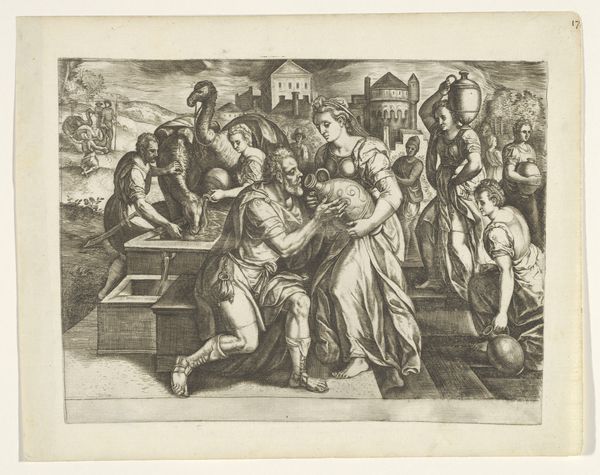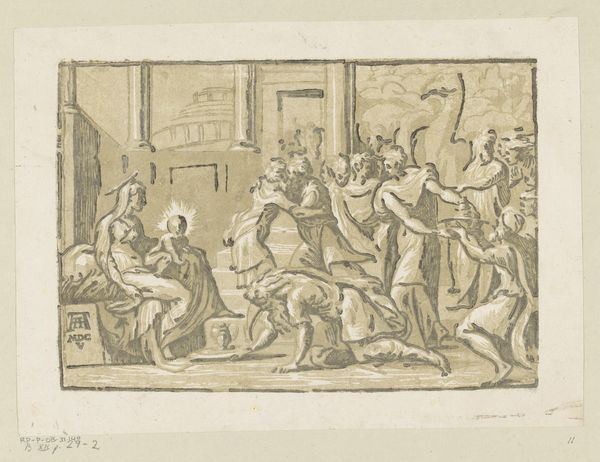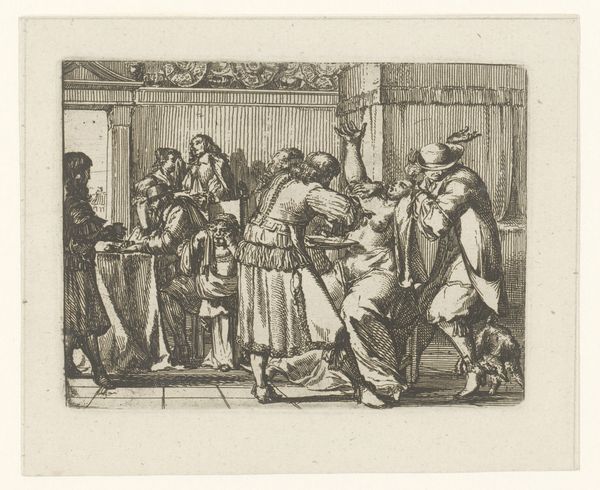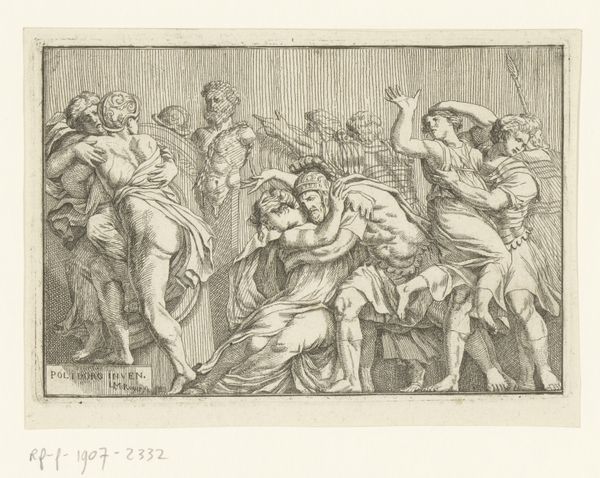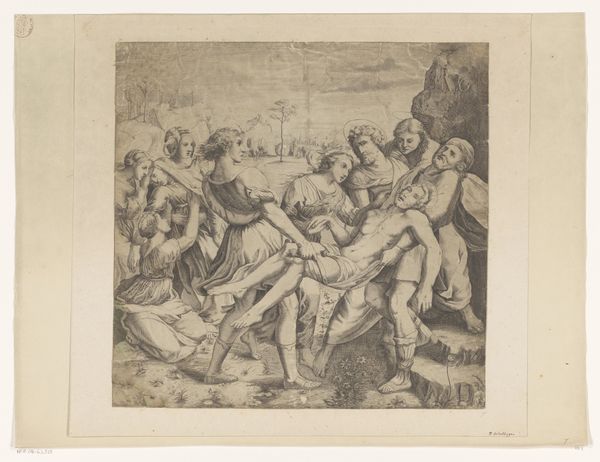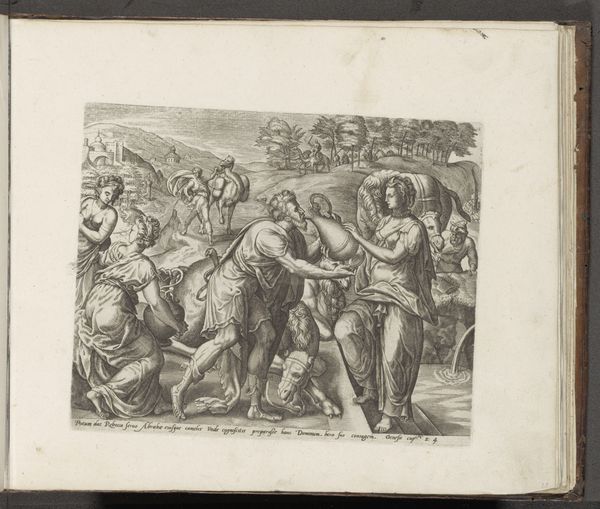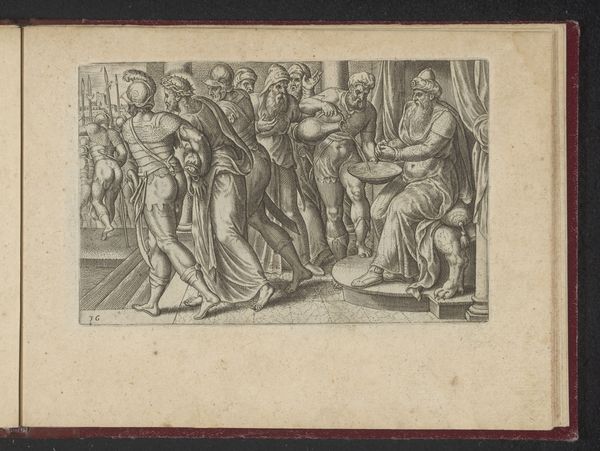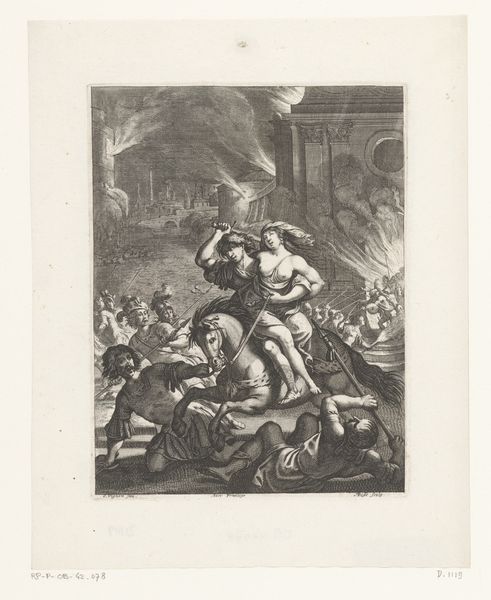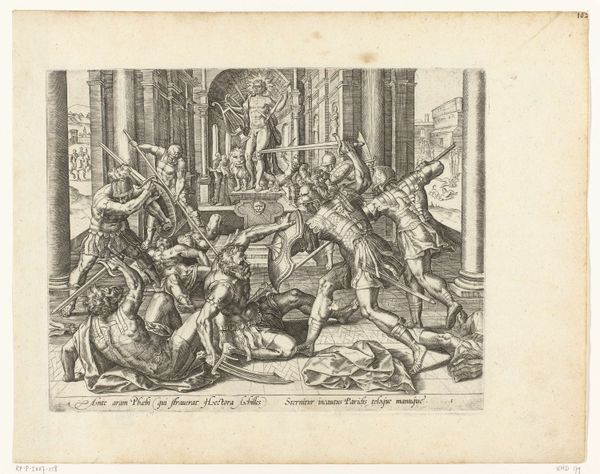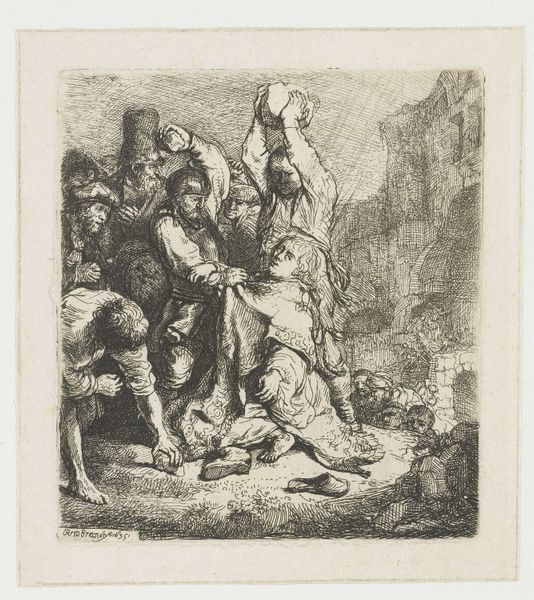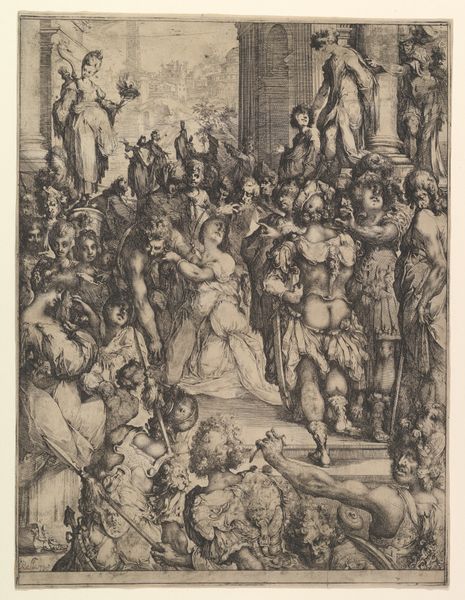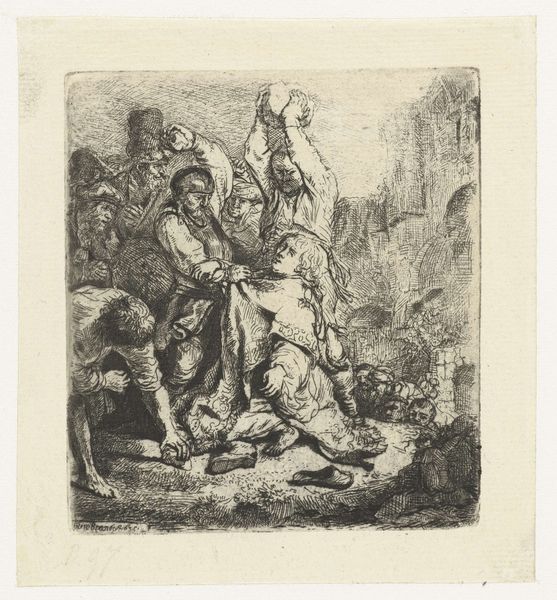
print, engraving
#
narrative-art
#
baroque
# print
#
old engraving style
#
caricature
#
figuration
#
line
#
history-painting
#
engraving
Dimensions: height 94 mm, width 118 mm
Copyright: Rijks Museum: Open Domain
Curator: This is Romeyn de Hooghe's engraving, "The Mocking of Christ," created around 1668. It's currently held at the Rijksmuseum. What strikes you first? Editor: The sheer density! It feels almost claustrophobic; a mass of bodies surrounding a central, vulnerable figure. You can almost feel the rough texture of the etching lines under your fingers, and how it contrasts against the dark background. Curator: Indeed. The historical and social context is crucial here. De Hooghe was working in a period of significant religious and political upheaval in the Dutch Republic. Consider this engraving, and others like it, as commentaries on power, authority, and societal norms. Editor: Power indeed— look at the variety of poses. Kneeling, lunging, standing upright—it really reflects power's unstable position when based upon such inhumane methods. How does the process of engraving lend itself to communicating such a brutal story? Curator: The printmaking allows for wide distribution, facilitating discourse around theological narratives that legitimized state-sanctioned authority. And that narrative would, undoubtedly, have been a potent catalyst for social action. Editor: Interesting! And look at the use of line; it defines not just forms, but textures, conveying the grittiness, even the dirtiness, of the event. This wasn’t some pristine, spiritual moment, but a messy, bodily affair. It seems very intentional. The production quality reflects this. Curator: I see what you mean. By understanding the historical environment, along with De Hooghe’s biography as an artist operating under certain socio-political circumstances, we glean an understanding of how "Mocking of Christ" could be a message both against, as much as in line with, the state and authority. Editor: It truly bridges this high art subject matter, using an artistic material that's meant to create accessibility. Food for thought. Curator: A powerful combination, yielding an emotionally resonant depiction and enduring example of how art and material engage with and challenge social issues. Editor: Absolutely, offering potent avenues into exploring that fascinating intersection.
Comments
No comments
Be the first to comment and join the conversation on the ultimate creative platform.
